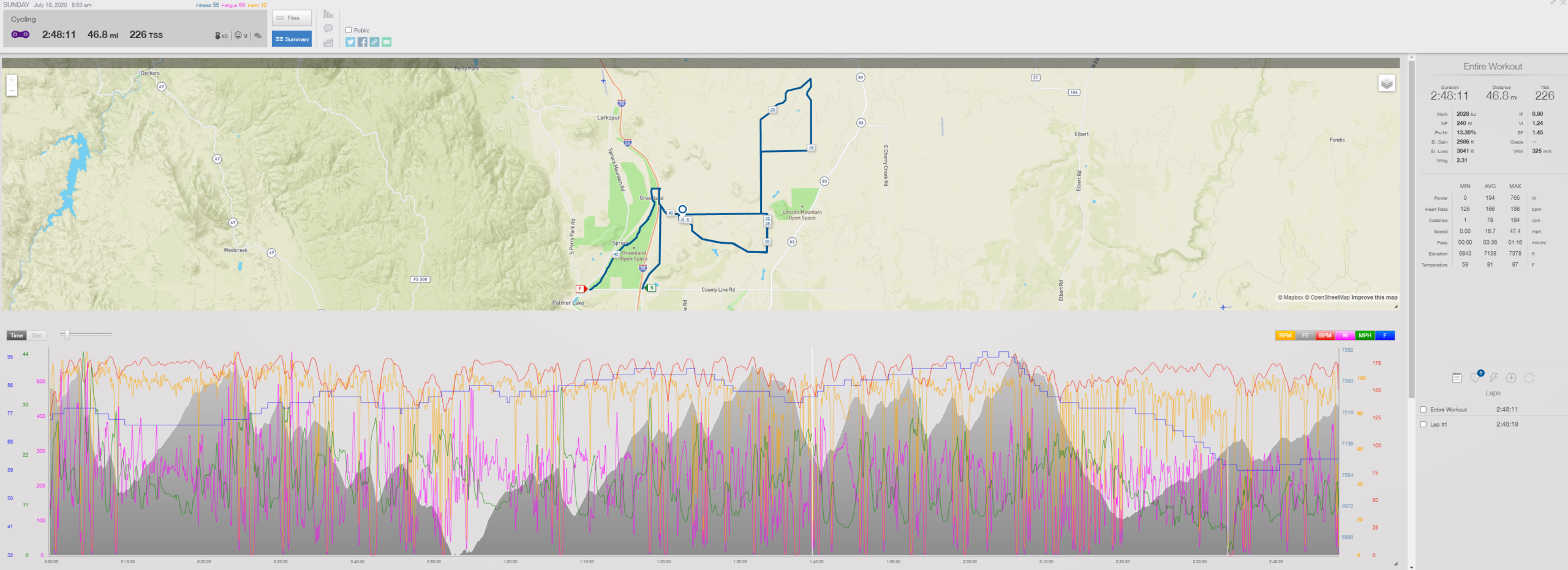How to Build a Pacing Plan for Your Next Gravel Cycling Event
Pacing is essential in longer cycling events. When you’re out on gravel roads for long hours you need a plan so you don’t blow up and cross the finish line as fast as your fitness allows.
Why you Need a Pacing Plan
When you boil down endurance sports to their base essence, they’re all about energy management. You’ve trained your engine, on event day you want to run it as hard as it will go over the length of the course without blowing up. If you pace an event correctly, you’ll cross the finish line just as you’re running out of juice. Go too hard and you’ll grab yourself a DNF or worse hours of slow, painful grinding. Go too easy and you’ll leave time out on the course.
The number on benefit of building a plan, though, is that you don’t have to worry about it so much on race day. You’ll have enough to focus on, you don’t want to be in the pack at 25 mph doing calculation in your head. Train, test, build a plan and execute.
Using FTP, Normalized Power and Intensity Factor to Build a Plan
We spend a lot of training time worrying about Functional Threshold Power (FTP), the maximum wattage you can hold for one hour, while training. That doesn’t change on race day. The higher your FTP, the stronger you are. Workouts are scaled to FTP, as your FTP increases the workout targets increase in kind to maintain the same difficulty. The same idea holds true on race day.
To build an effective event pacing plan we need to select a target power for the event and make a plan for hitting that target. The keys to find that target power is Intensity Factor (IF) and Normalized Power (NP).
Intensity Factor (IF) is simply a ratio of NP to FTP. A ride with an IF of 1.0 would equal an all-out effort for one hour at your FTP. A 0.9 IF would be a ride at 90% of FTP.
Normalized Power (NP) gives you an average power number for your ride had you ridden at a constant power output. In other words, it’s a weighted average which gives you more credit for power spikes and better accounts for their physiological impact.
The length of an event effects our IF target. For an event less than an hour in length we might actually target an IF greater than 1.0. For a long, grueling event a realistic target will be 0.70 or below.
Finding Your Normalized Power Pacing Target
To find your target NP, you need to target an IF first. Start with an estimate for how long the course will take you, build this from experience based on distance, surface conditions, elevation gain and previous year finishing times. These targets are for trained athletes, you may need to decrease based on experience.
Intensity Factor Target by Time
0 to 45 minutes – 1.05 to 1.10 IF
1 Hour – 1.00 IF
1 to 2.5 Hours – 0.90 IF
2.5 to 5 Hours – 0.80 IF
5+ Hours – 0.70 IF
Using IF to Find Your Target NP
To get your target NP for the event simply multiple the appropriate IF above by your FTP.
Real World Pacing Example
I raced the Gravel Nation 88 over the weekend, in anticipation of the event I built a pacing plan. I started by reviewing the course to determine my anticipated finish time. The course was just under 50 miles with 3,000 feet of elevation gain on fine gravel roads with a 6 mile single track finish. Based on experience and reviewing the course I anticipate it would take me somewhere between 2.5 and 3 hours. I decided on a target of 0.85 IF.
Knowing that my current FTP is 275 watts, I multiplied 275w x 0.85 = 234 watts. My target Normalized Power for the race was 234 watts.

So how did I do? Well, about the best I personally could have. With Normalized Power prominently placed on all my cyclocomputer screens I stuck to the plan and never over exerted. At the end of the day I fell within my target time and had a normalized power for the event of 240 watts.





